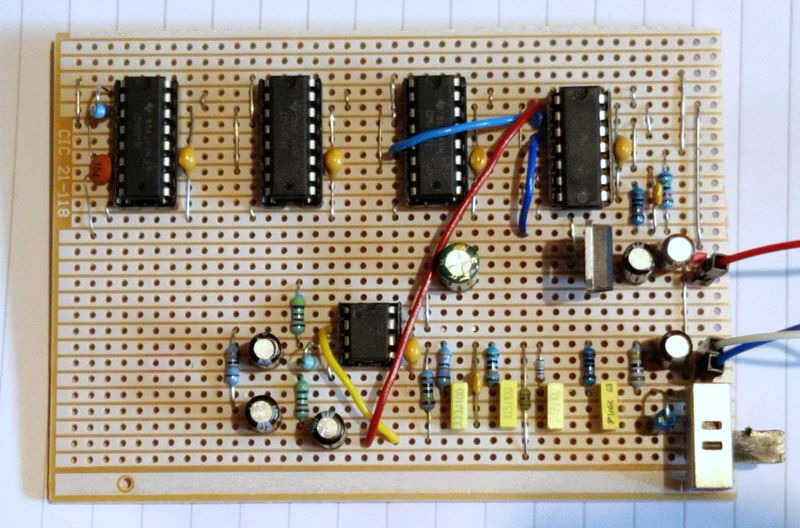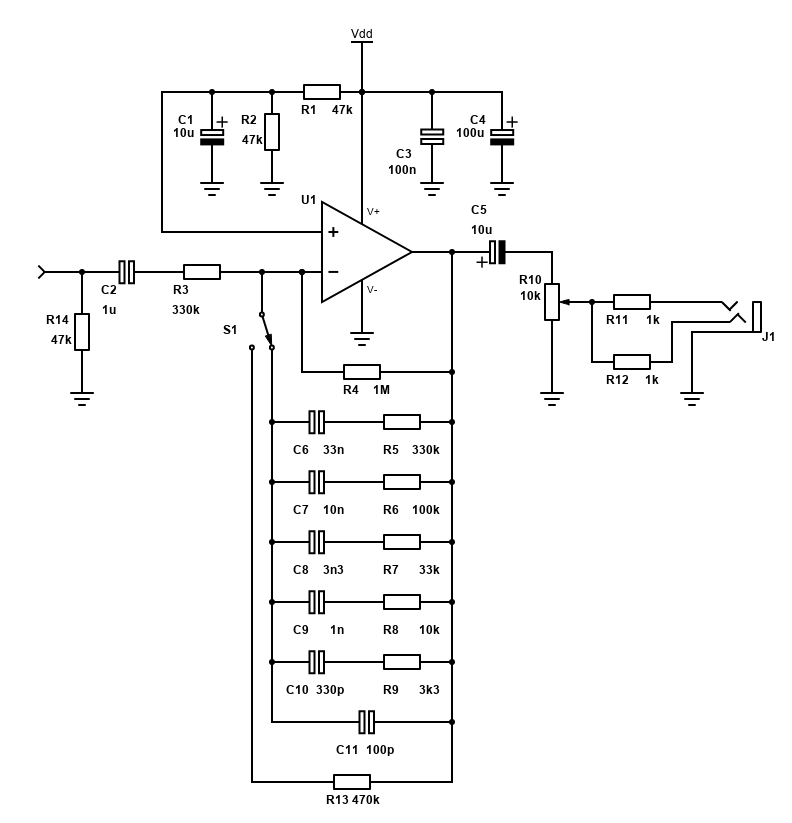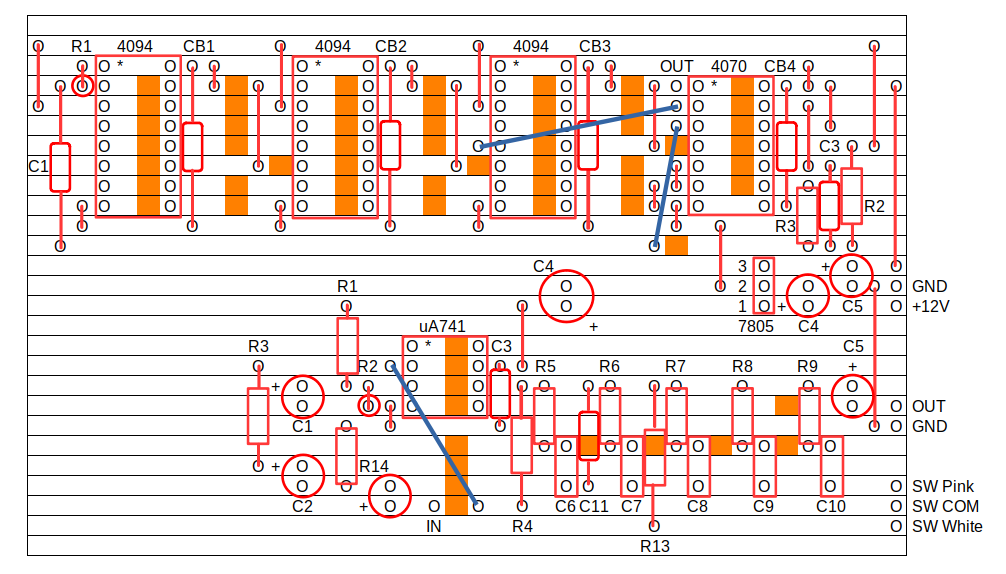White and Pink Noise Generator - ESP Project 182
I wanted to build a white noise generator, mainly for masking noise from refurbishment (actually flammable cladding removal and replacement) and nearby newbuild construction, but also something that could be useful for testing equipment.
I did consider the analogue way, but it needs a particular type of transistor or diode and isn't perfect.

ESP Project 182 looked appealing, and although I also did not have the 4094 or 4070 ICs, they are cheap, and I needed to make a small order anyway for other components. 75k resistors were also ordered - they are not in my stock! I had everything else though, even all the different capacitors which was a surprise!
The hard work is already done by Rod and the explanations on the project page are good and like all he's stuff, an interesting read.
I was also looking at programming a PIC to generate the white noise, which would have ended up more compact, but I didn't want to spend lots of time on this project, and instead designed a stripboard layout for the generator which includes both the logic based white noise source, the pink noise filter, and a simple 5V regulator.
The pink noise filter I modified slightly to convert it to a single supply opamp circuit by creating a virtual ground and applying that to the non-inverting input of the opamp, as well as adding the DC blocking capacitors before and after the circuit, below is my modified schematic.

The convenience of the single supply version is I can just plug any common 12V PSU and that is good enough to power both the 5V regulated supply to the logic side of the circuit, and the analogue side without needed a separate +/-12V (or similar) split rail PSU.
The other modification I did was to add a switch to change between white noise and pink noise using a SPDT switch. As the switch is in the opamp feedback path, R4 is left always connected so the opamp is never left floating with no feedback momentarily when changing position.
If your single supply is 12V, U1 can be µA741 or LF351 or any cheap single opamp.
The layout I used is below. It's not compact, but it works fine. Planning the layout took me about 90 minutes I think, and around another 90 minutes for the build, though some time after was spent trying to find a fault which resulted in no output. This turned out to be just one strip that needed to be cut still having a tiny bit of conductivity.

Whilst diagnosing my error, I used the oscilloscope to measure the clock - pretty much matches 60kHz as needed!

So far, I've not put this project in a speaker box, I'm actually waiting for a speaker to arrive.

Yeah, I know this implementation is pretty large for generating white noise, and I'd have done better using a microprocessor instead, or just buying one of those voice sound module audio players and putting a WAV file of white noise on it, but I'm all about building stuff and getting away from the laptop/phone for a bit which I use too much in the day job. Cost so far has been about £6 (including speaker still stuck in UK customs) because most components I already had.
In case anyone wonders, there is no artefact that I can hear to identify once the 2 minutes and 20 seconds (approx) is over and the MLS repeats.
If you find this useful, please send a donation to ESP, or check out the many great projects there and order boards.
Reference: ESP Project 182
